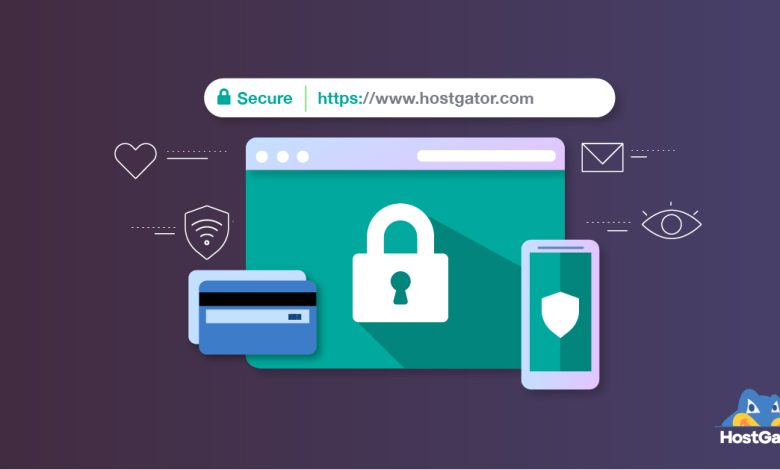Beyond Encryption: The Comprehensive Guide to SSL Monitoring for Enhanced Website Security and Performance
Master SSL Monitoring to Secure Your Website

Introduction
In today’s digital landscape, maintaining a secure website is crucial for businesses and individuals alike. A key aspect of online security is the SSL (Secure Sockets Layer) certificate, which encrypts data between a web server and a browser, ensuring that sensitive information remains private. However, obtaining an SSL certificate is not a one-time solution. Continuous SSL monitoring is essential to safeguard your website from potential threats, maintain optimal performance, and uphold user trust.
This article delves into the importance of SSL monitoring, the benefits it brings beyond security, and the steps you can take to implement effective SSL monitoring strategies.
The Importance of SSL Monitoring
Preventing Security Breaches
SSL certificates protect data in transit, but if they are not actively monitored, they can quickly become a liability.
- Identifying Vulnerabilities Early: Regular SSL monitoring helps detect expired certificates or weak encryption protocols that could be exploited by cybercriminals.
- Mitigating the Risk of Data Theft: Monitoring helps prevent data breaches by ensuring that all SSL certificates are valid and secure, reducing the risk of man-in-the-middle attacks and other cyber threats.
Enhancing Website Performance
SSL monitoring is not just about security; it also plays a crucial role in maintaining website performance.
- Optimizing SSL Configuration: Proper monitoring can identify configuration issues that may slow down your website, ensuring faster page load times and a better user experience.
- Avoiding Downtime: By keeping SSL certificates up to date, monitoring prevents the downtime caused by expired or misconfigured certificates.
Building and Maintaining Customer Trust
Customers are more likely to trust a website that is secure and reliable. SSL monitoring helps maintain this trust by ensuring the continued validity of security measures.
- Preventing Browser Warnings: Regular monitoring helps avoid browser warnings that can erode user confidence and drive visitors away.
- Maintaining a Positive Brand Image: A secure and smoothly functioning website helps build and maintain a positive brand image, encouraging repeat business and customer loyalty.
Key Components of Effective SSL Monitoring
Continuous Certificate Status Checks
Continuous checks on the status of SSL certificates help identify issues before they impact website security or performance.
- Monitoring Expiration Dates: Automated tools can keep track of SSL certificate expiration dates and alert administrators before they expire.
- Checking for Revoked Certificates: Regular monitoring ensures that any revoked certificates are identified and replaced promptly.
Automated Alerts and Notifications
Setting up automated alerts and notifications is crucial for rapid response to potential SSL issues.
- Real-Time Alerts for Immediate Action: Real-time alerts enable immediate action to resolve SSL-related problems, minimizing potential damage.
- Customizable Notification Settings: Customizable settings allow administrators to receive alerts through various channels, such as email or SMS, based on their preferences.
Vulnerability and Misconfiguration Detection
SSL monitoring tools should be able to detect vulnerabilities and misconfigurations that could compromise security or performance.
- Detecting Weak Cipher Suites: Monitoring helps identify weak cipher suites that could be exploited by attackers, prompting necessary updates.
- Ensuring Proper SSL/TLS Version Usage: Regular scans check that SSL/TLS versions used are secure and not outdated, ensuring robust protection against vulnerabilities.
Benefits Beyond Security: Why SSL Monitoring Matters
SEO Benefits
SSL certificates are a key factor in search engine rankings. Regular SSL monitoring ensures that certificates remain valid, which can positively impact SEO.
- Avoiding Negative SEO Impact: An expired or improperly configured SSL certificate can negatively affect your search engine rankings. Monitoring helps avoid these pitfalls.
- Enhancing User Experience: A secure website with valid SSL certificates improves user experience, leading to lower bounce rates and better SEO performance.
Streamlining Compliance Efforts
For businesses operating in regulated industries, SSL monitoring is vital to maintain compliance with data protection regulations.
- Ensuring Regulatory Compliance: Regular SSL monitoring helps businesses stay compliant with regulations such as GDPR, HIPAA, and PCI DSS, avoiding fines and penalties.
- Simplifying Audit Processes: Continuous monitoring simplifies the audit process by ensuring that all SSL certificates are up to date and properly configured.
Reducing Operational Costs
Proactive SSL monitoring can save businesses money by preventing costly security breaches and minimizing the need for emergency IT interventions.
- Minimizing Risk of Financial Loss: By preventing data breaches, SSL monitoring helps avoid financial losses associated with security incidents.
- Reducing IT Workload: Automated monitoring reduces the workload of IT teams by automating the certificate management process, freeing them up for other critical tasks.
Best Practices for Implementing SSL Monitoring
Utilize Comprehensive SSL Monitoring Tools
Investing in comprehensive SSL monitoring tools can streamline the management process and provide robust security.
- Choose Tools with Automated Scanning Capabilities: Tools with automated scanning and alerting capabilities can identify and resolve issues before they impact your website.
- Select a Solution that Offers Centralized Management: A centralized management platform allows you to monitor all SSL certificates across your organization from a single dashboard.
Regularly Review and Update SSL Policies
Regularly reviewing and updating SSL policies helps ensure that your security measures remain effective against evolving threats.
- Establish a Review Schedule: Set a schedule for regularly reviewing SSL policies and configurations to ensure they remain up to date.
- Incorporate Security Updates: Regularly incorporate the latest security updates and patches to address new vulnerabilities.
Educate Your Team on SSL Best Practices
Ensuring that your team is educated on SSL best practices is essential for maintaining a secure environment.
- Provide Training on SSL Management: Regular training sessions can help your team stay informed about the latest SSL management techniques and best practices.
- Encourage a Culture of Security Awareness: Promoting a culture of security awareness helps ensure that SSL management is taken seriously and prioritized across your organization.
Top Tools for SSL Monitoring
Qualys SSL Labs
Qualys SSL Labs is a comprehensive tool that provides in-depth SSL scanning and monitoring capabilities.
- Deep SSL Analysis: Offers detailed SSL analysis and grading to help identify weaknesses in your SSL configuration.
- Automated Scans and Alerts: Provides automated scans and alerts to notify administrators of potential issues.
Digicert Certificate Inspector
Digicert Certificate Inspector provides robust SSL monitoring and management capabilities.
- Centralized Management Dashboard: Offers a centralized dashboard for managing SSL certificates across multiple domains.
- Detailed Reporting and Alerts: Provides detailed reporting and real-time alerts to help administrators stay on top of SSL management.
Comodo Certificate Manager
Comodo Certificate Manager is a powerful SSL management tool that simplifies the SSL monitoring process.
- Automated Renewal and Management: Automates the renewal and management of SSL certificates, reducing the risk of expired certificates.
- Vulnerability Scanning and Detection: Offers vulnerability scanning and detection to identify potential security issues.
Overcoming Common SSL Monitoring Challenges
Managing SSL Certificates for Multiple Domains
Managing SSL certificates for multiple domains can be challenging, especially for larger organizations.
- Utilize Wildcard SSL Certificates: Consider using wildcard SSL certificates to simplify management for multiple subdomains.
- Leverage Automated Management Tools: Automated tools can help streamline the management process by providing centralized control over all certificates.
Handling SSL Certificate Expiry and Renewal
Ensuring SSL certificates are renewed on time is critical to maintaining website security and avoiding browser warnings.
- Set Up Automatic Renewal Processes: Automate the renewal process to ensure certificates are renewed on time without manual intervention.
- Implement Expiry Alerts: Use monitoring tools that provide expiry alerts well in advance of the certificate expiry date.
Staying Updated with Evolving Security Standards
Security standards evolve rapidly, and staying updated is essential to maintain effective SSL management.
- Regularly Update SSL/TLS Configurations: Regularly update SSL/TLS configurations to align with the latest security standards and recommendations.
- Monitor Industry Trends: Stay informed about the latest industry trends and updates related to SSL/TLS security.
Conclusion
SSL monitoring is a critical aspect of website security, performance optimization, and customer trust. By implementing a robust SSL monitoring strategy, businesses can protect their online presence, improve SEO, and reduce operational costs. Whether you are managing a small website or a complex enterprise network, SSL monitoring is essential for maintaining a secure and trustworthy online environment.
Call to Action:
Take control of your website’s security today. Invest in a comprehensive SSL monitoring solution, educate your team on best practices, and stay ahead of potential threats. Secure your online presence and build trust with your customers through effective SSL management.









